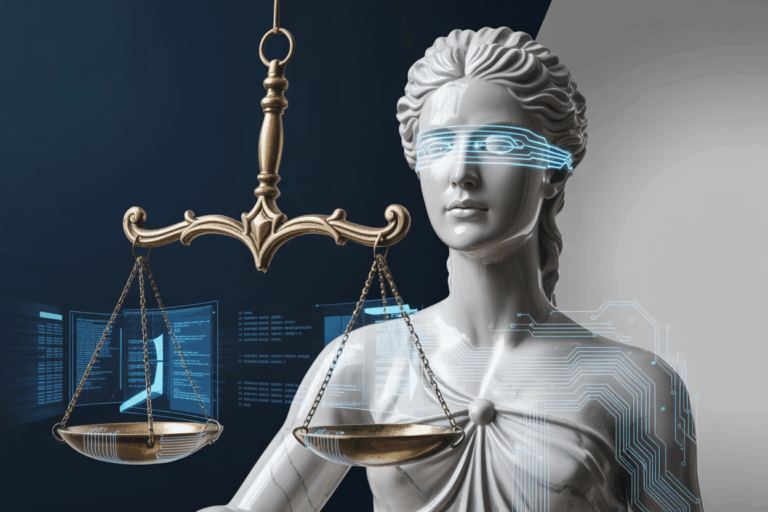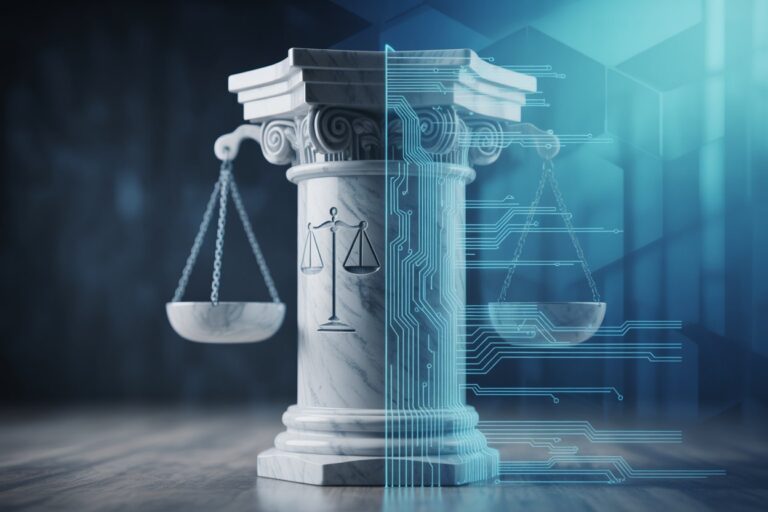The Great In-House Shift: How AI is Redefining Outside Counsel
Corporate legal departments used to rely on outside counsel for nearly everything. Now many are building AI systems on their own playbooks, contracts and precedents. If in-house teams can implement secure AI suited to their workflows, the economics of outside counsel spend could shift dramatically.
From Buy to Build: Why This Question Matters Now
In-house adoption of generative AI has accelerated across legal departments, moving beyond pilot programs into daily practice. According to a recent survey, corporate legal teams are more likely than law firms to report regular AI usage. Data show 81 percent of in-house counsel now use AI tools compared to 55 percent of firm attorneys. The implication is clear: inside teams believe they can shape the future of legal service delivery rather than simply contract it.
The shift is not just about faster reviews or smarter drafting. Legal operations leaders are under pressure to show savings. Recent reports highlight that AI-enabled tools are expected to reduce cycle time, lower legal spend and free up in-house teams to focus on strategic work. Cost reduction and productivity emerge as top benefits of in-house AI adoption according to industry analysts.
Defining “Build”: Beyond Buying Off the Shelf
“Build” does not necessarily mean writing a neural network from scratch. Most in-house programs assemble private systems on top of enterprise platforms: an approved foundation model, secure connectors to contract repositories, retrieval over playbooks, and legal-specific governance. According to a KPMG white paper, agentic AI could redefine how legal teams operate, shifting from human-driven processes to AI-driven ones.
Meanwhile, departments may continue to buy best in class vendor tools for high-risk work while building smaller but tailored systems for high-volume, repeatable tasks. Usage patterns show research, drafting and clause-analysis as early wins for internal tools. In-house teams cite contract summarization and due-diligence review as the most adopted use cases.
The Economics: Will Build Reduce Firm Spend?
The model for building an internal system has a clear business logic: if in-house teams can handle tasks that would otherwise go to outside counsel, the margin on that saved spend accrues to the company. Early indicators show promise. Yet progress has been uneven. A Bloomberg Law article found that many in-house leaders report they have not yet seen meaningful discounts from their outside counsel partners despite those partners adopting AI. Surveys found outside counsel cost reduction remains elusive even as AI is adopted.
Budget forecasts support continued tech investment in corporate legal departments. Recent studies show legal department budgets are rising with 61 percent of general counsel expecting further growth in 2025, primarily for technology investments. The projected rise in spend creates headroom for build programs, but also sets higher expectations for ROI. Many organizations underestimate the engineering effort required to maintain and update models as legal requirements evolve, leading to stalled or abandoned initiatives.
A credible business case now compares total cost of ownership for internal build against vendor or licensed models and outside counsel rates. Guidance emphasizes metrics beyond hours billed: cycle time, rework, matter-mix shifting, and risk mitigation. Recommended ROI frameworks track efficiency, quality and fee avoidance rather than simple headcount reduction.
Architectures That Actually Work In-House
Private retrieval over legal corpora. Contract repositories, negotiation playbooks, clause banks, prior memos feed internal retrieval-augmented systems. Proper permissions and encryption lock the content securely.
Model orchestration. A tiered stack uses smaller models for summarization and classification, and larger models where needed for drafting while maintaining appropriate review workflows.
Human verification and control points. All outputs flow through appointed reviewers, alerting for flagged prompts, and enforcing identity, log trails and matter ownership. According to the Association of Corporate Counsel toolkit, in-house legal teams must make verification workflows contractual with the business.
Talent, Governance and Emerging Risks
Build programs demand different skills: prompt engineers, legal tech product owners and data stewards sit alongside counsel. Legal operations reports show departments adding roles for automation and analytics while formalizing intake and model approval gates. Five step frameworks highlight governance and talent as critical enablers for successful AI adoption.
Owning the stack also exposes the legal department to new liabilities. When a self-built tool makes a mistake, the question of liability arises: the department, the general counsel office or the vendor? Industry advisors warn that governance gaps and incident response plans remain underdeveloped in many teams, and that in-house build increases risk if controls are weak.
The regulatory landscape adds complexity. Legal departments building AI systems must navigate emerging frameworks like the EU AI Act and various US state laws. Compliance considerations include data privacy, algorithmic transparency, and potential discrimination in automated decision-making. These challenges become the department’s responsibility when building rather than buying. Data residency and cross-border transfer requirements further complicate build decisions, particularly for multinational corporations subject to GDPR and similar frameworks.
What Law Firms Are Doing in Response
Law firms sense the shift. Some are acquiring legal tech companies or building their own AI teams to stay competitive. For example, a major firm acquired Springbok AI, a London based legal tech startup, to embed AI internally and defend its pricing model.
Other firms are partnering with enterprise platforms and repositioning their services: in-house teams take first drafts and research, while firms focus on high-judgment, strategic, or cross-border work. Recent case studies illustrate this hybrid model emerging, with internal legal teams reducing vendor legal hours by re-allocating firm roles.
The ROI Reality: Will Build Reduce Outside Counsel Costs?
Three factors determine how much internal build can offset outside counsel spend: matter mix (volume and repeatability), data- or process-maturity, and outside counsel pricing model. If outside work is high-volume and predictable, internal tools can displace hours. But if it is novel, high-risk, or jurisdictionally complex, savings are limited.
Market reports note that many general counsel still expect their outside counsel spend to rise even as their internal departments adopt more technology. Recent forecasts show upward pressure on outside counsel spend, suggesting internal build will rebalance but not fully eliminate third-party costs.
The skills gap presents another challenge. Building sophisticated AI systems requires data scientists, machine-learning engineers, and AI specialists. This talent is expensive and difficult to recruit. Many legal departments lack the technical infrastructure and expertise needed to develop, deploy, and maintain production-grade AI systems, making the “build” path more resource intensive than initially anticipated.
Procurement, Pricing and the New Vendor Mix
Expect RFPs and panels to evolve: procurement teams will ask for model logs, audit trails, and transparency when legal vendors use AI. Internal systems will drive a two tier strategy: licensed platforms for high-volume matter types plus a smaller panel of specialist firms for high-judgment tasks.
Legal operations leaders suggest tech audits, change management programs and KPI baselining before major build commitments. Emerging playbooks stress sequencing and measurement to avoid shelfware and ensure sustainable adoption.
Three Paths Forward
Hybrid insourcing. Legal departments deploy private copilots for research, contracts and first drafts; outside counsel focus on strategy and cross-border matters. Internal savings emerge through fewer vendor hand-offs and reduced cycle time.
Platform plus extensions. In-house teams license a core legal AI platform and build thin matter-specific modules on top. Savings grow through velocity and fewer external task-outs.
Targeted full build. Large legal departments with strong data assets build domain-specific copilots for high-volume lanes (e.g., procurement contracts, licensing, compliance). Vendor hours shrink materially in those lanes, while specialist counsel retains strategic work.
What Will Determine Success
In-house AI systems can reduce certain third-party legal costs when matter types are repeatable, data is well governed and verification workflows are robust. Where matters are novel, jurisdictionally complex or high-risk, specialist firms will remain essential. The decisive variable is not the model. It is the operating model: intake, data, review, pricing and accountability.
The question for legal departments is no longer whether to invest in AI capability but where that capability should sit. Some will build comprehensive stacks. Others will license and customize. Most will land somewhere between, assembling hybrid architectures that match their matter mix, risk tolerance and technical capacity. The path each department takes will depend less on technology trends and more on honest assessment of internal strengths, strategic priorities and the willingness to manage new categories of risk.
As legal departments build their stacks and refocus what they buy, expect fewer research hours flowing to firms, tighter scopes, and more alternative-fee approaches. Outside counsel firms will compete on high-judgment and defensibility. Inside teams will measure not just what they keep, but what they still need to buy.
My Take
The fallout or possibilities from AI are endless. I have spent the last two years using it nearly every day, and even now it still surprises me how fast everything is changing.
This article is a good example. It always seemed obvious that in-house legal departments would use AI, but I had not fully considered what that might mean for BigLaw. Imagine if every Fortune 500 company built its own AI system to handle most of its routine legal work. The potential revenue hit to large firms could be enormous.
I say could because no one yet knows how far corporate legal teams will go in replacing outside counsel with internal AI systems. It might be transformational or it might be incremental. What is clear is that large companies are running the numbers, exploring acquisitions, and looking for ways to cut legal costs significantly.
Small businesses will benefit too. They do not need custom systems. They can subscribe to existing AI platforms and get quick access to affordable in-house legal support for contracts, filings, and strategy.
One thing seems inevitable. BigLaw will have to stay sharp on pricing and value. If firms do not adapt, they will make the build versus buy decision easy for clients because building will save a fortune.
Looking more broadly, this is not just a legal story. AI is entering every part of business life including legal, finance, HR, marketing, and operations. The firms that succeed will be the ones that learn how to work with AI rather than against it.
Sources
- Association of Corporate Counsel: Artificial Intelligence Toolkit for In-house Lawyers
- Association of Corporate Counsel: Generative AI’s Growing Strategic Value in Corporate Law Departments
- Axiom Law: Five Steps to Prepare Your Legal Department for AI Adoption
- Axiom Law: The Effect of Technology and Emerging Risks on 2025 Legal Department Budgets
- Bloomberg Law: AI Does Little to Reduce Law Firm Billable Hours
- Cleary Gottlieb: Acquires Springbok AI
- CLOC: Legal’s New Playbook, AI, Automation, and Business Alignment
- KPMG: From Data to Wisdom, The Role of Agentic AI in Business Operations
- Legal.io: Law Firms Trail Legal Departments in AI Adoption
- The Guardian: NRMA’s In-House Legal Team Embraces AI
- Thomson Reuters Institute: 2025 State of the U.S. Legal Market
- Thomson Reuters: The ROI of Legal Tech and AI Report 2025
- Vinson and Elkins: What In-House Counsel Needs to Know About Generative AI
This article was prepared for educational and informational purposes only. It does not constitute legal advice and should not be relied upon as such. All sources cited are publicly available through reputable media and industry outlets. Readers should consult professional counsel for specific legal or compliance questions related to AI use in legal departments.







